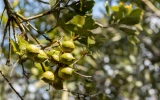What Type of Soil Do Macadamia Trees Like?
When growing macadamia trees, you'll want to provide a foundation that mimics their native environment to ensure they thrive. Ideally, your macadamia trees need well-drained, rich soil that retains moisture without becoming waterlogged. In this article, we'll find out which type of soil macadamia trees grow best in.
Macadamia trees thrive in well-draining, slightly acidic soil with a pH level between 5.0 and 6.5. They prefer sandy loam or loamy soil that is rich in organic matter and has good aeration. The soil should also retain moisture well, but excess water should be able to drain away efficiently.
Your tree's growth success hinges on specific soil attributes that support growth. As you go further, we'll discuss each attribute in detail.
Evaluating soil suitability helps set up the best conditions when establishing a macadamia orchard.
Summary
- Macadamia trees require nutrient-rich loamy soil, which provides good drainage, moisture retention, and nutrient retention capabilities, and contains essential nutrients such as nitrogen, phosphorus, potassium, calcium, magnesium, and sulfur, as well as micronutrients like iron, manganese, zinc, copper, boron, and molybdenum to support the trees' growth and development.
- The presence of organic matter in the soil is crucial for the growth of macadamia trees, as it improves soil structure, provides nutrients, and enhances microbial activity.
- Proper aeration of the soil minimizes compaction and incorporates organic matter into the soil, allowing for better air penetration and root expansion in macadamia trees.
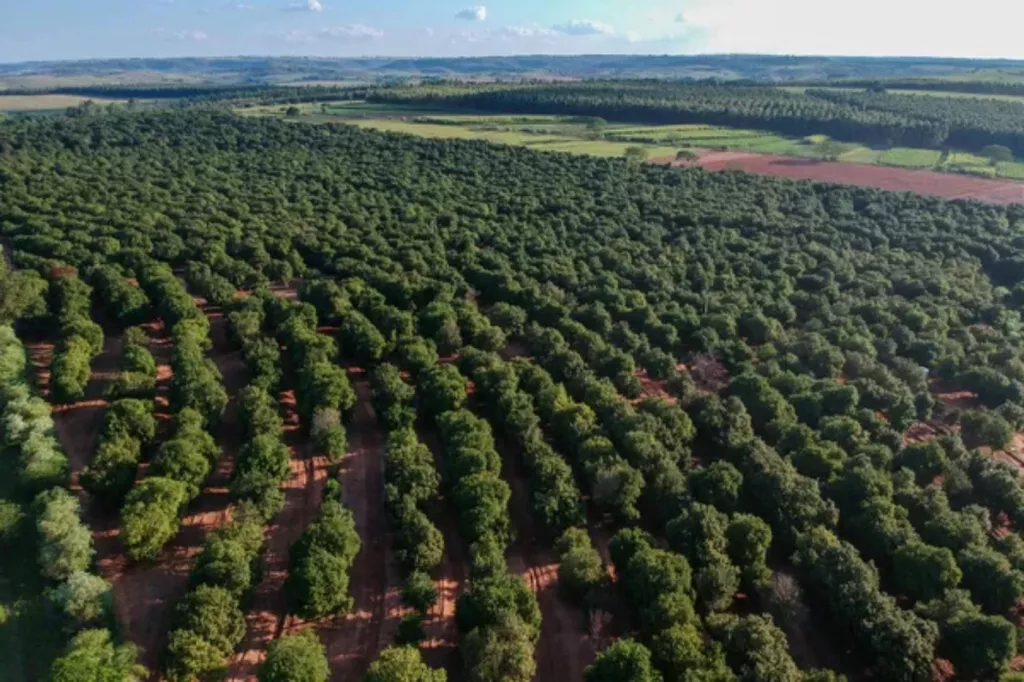
On this page:
Macadamia Tree Soil Requirements
The table below summarizes the characteristics a soil must possess to grow Macadamia trees well:
| Soil Requirement | Description |
|---|---|
| pH Level | Optimal pH level for macadamia trees is between 5.0 and 6.5, falling within the slightly acidic range. |
| Drainage | Well-draining soil is crucial to prevent waterlogged conditions, which macadamia trees are sensitive to. |
| Nutrient content | Soil should contain nitrogen, phosphorus, potassium, calcium, magnesium, and sulfur, as well as micronutrients like iron, manganese, zinc, copper, boron, and molybdenum. |
| Soil composition | Loamy soil, a combination of sand, silt, and a small amount of clay, is considered ideal for macadamia cultivation. |
| Organic matter | Important for improving soil structure, providing nutrients, and preventing waterlogging. |
| Aeration | Proper aeration is crucial for allowing the roots to breathe and preventing soil compaction. |
| Moisture retention | Soil should retain moisture well while allowing excess water to drain efficiently. |
Macadamia trees require slightly acidic soil
In macadamia trees, the optimal pH level for the soil is between 5.0 and 6.5, which falls within the slightly acidic range. In slightly acidic soil, nutrients such as nitrogen, phosphorus, and potassium are more readily available for uptake by the tree's roots.
This is because the chemical reactions that release these nutrients from organic matter and minerals in the soil are most efficient within this pH range.
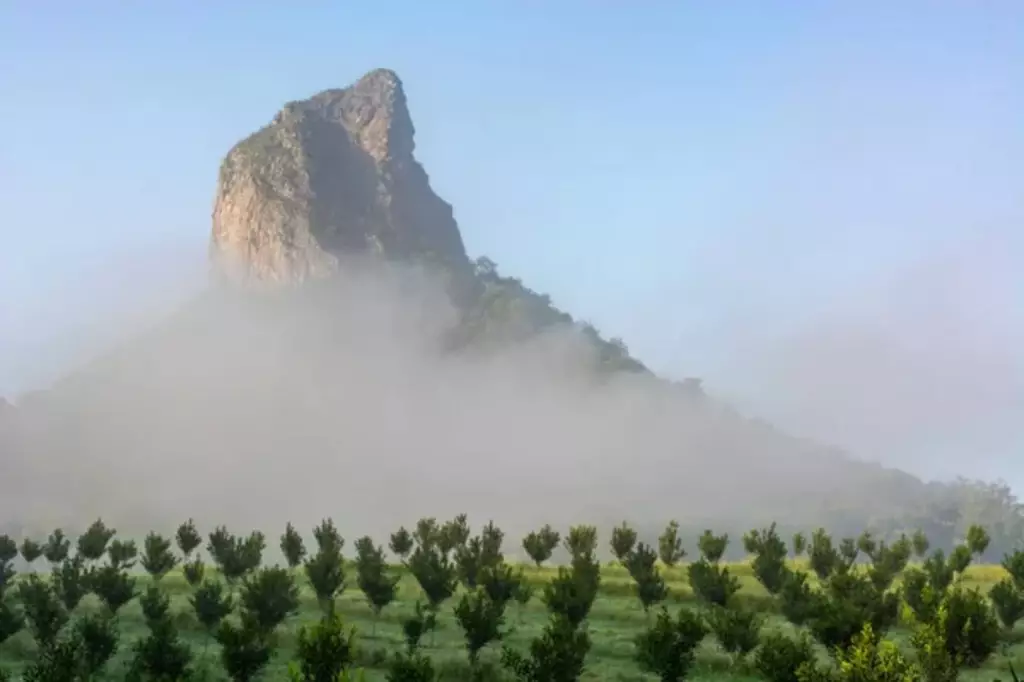
Additionally, many soil microorganisms, including those responsible for breaking down organic matter and fixing nitrogen, thrive in slightly acidic conditions. Therefore, maintaining the appropriate pH level can support a healthy and balanced soil ecosystem, which in turn benefits the macadamia trees.
Furthermore, in acidic soils, potentially harmful elements such as aluminum and manganese are less soluble and therefore less likely to be taken up by the tree roots, reducing the risk of toxicity.
Macadamia trees require well-draining soils
Macadamia trees are sensitive to waterlogged conditions, as their roots do not tolerate excessive moisture well. In order to prevent root rot and ensure the health and productivity of macadamia trees, try to ensure that the soil has good drainage.
Waterlogged soil can deprive the roots of oxygen, leading to a range of issues such as root rot, stunted growth, and ultimately, reduced yield. Therefore, you need to select a well-draining soil for macadamia cultivation.
This can be achieved through various methods, such as incorporating organic matter to improve soil structure, ensuring proper slope and contouring of the land to facilitate water runoff, and using raised beds or mounds in areas with poor drainage.
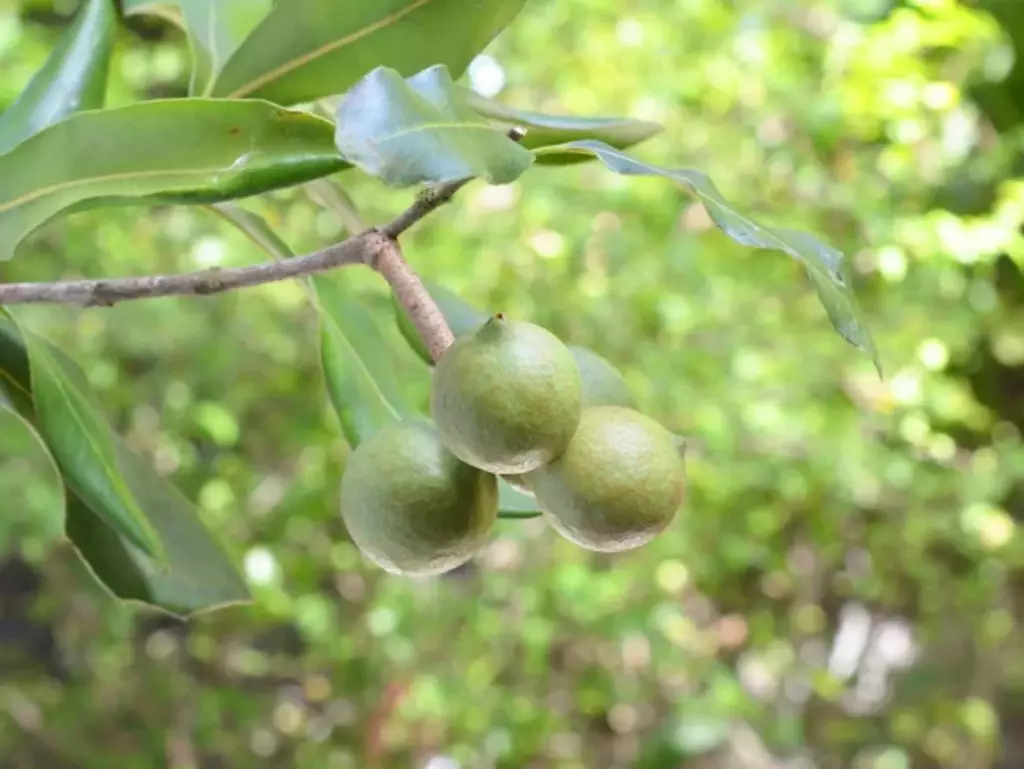
In addition to soil management, the installation of proper drainage systems, such as subsurface drains or French drains, can also be beneficial in areas where natural drainage is insufficient. These systems can help to efficiently remove excess water from the root zone, thereby preventing waterlogging and its associated detrimental effects.
Macadamias need nutrient-rich soil
Macadamia trees require specific soil nutrient content to support their growth and development. The key nutrients needed for macadamia growth include nitrogen, phosphorus, potassium, calcium, magnesium, and sulfur.
- Nitrogen is essential for the production of chlorophyll and amino acids, which are vital for overall plant growth and development.
- Phosphorus is necessary for energy transfer within the plant and plays a crucial role in root development, flowering, and fruiting.
- Potassium helps regulate water uptake and is important for overall plant health and disease resistance.
- Calcium is required for cell wall structure and stability, and it also plays a role in enzyme activity and nutrient uptake.
- Magnesium is a component of chlorophyll and is essential for photosynthesis.
- Sulfur is important for the synthesis of amino acids and proteins.
Soil testing can help determine the existing levels of these essential nutrients and identify any deficiencies that need to be addressed. Based on the soil test results, it may be necessary to integrate a balanced fertilizer to provide the macadamia trees with the necessary nutrients for a strong start.
In addition to the primary macronutrients mentioned above, macadamia trees also benefit from micronutrients such as iron, manganese, zinc, copper, boron, and molybdenum. These micronutrients play important roles in enzyme activation, photosynthesis, and overall plant health.
Macadamia trees thrive well in loamy soil
Loamy soil, which is a combination of sand, silt, and a small amount of clay, is considered ideal for macadamia cultivation due to its beneficial properties.
Firstly, the presence of sand in the soil allows for good drainage. This helps prevent waterlogging, which can lead to root rot and other issues. Proper drainage ensures that the roots have access to oxygen and helps to maintain a healthy root system.
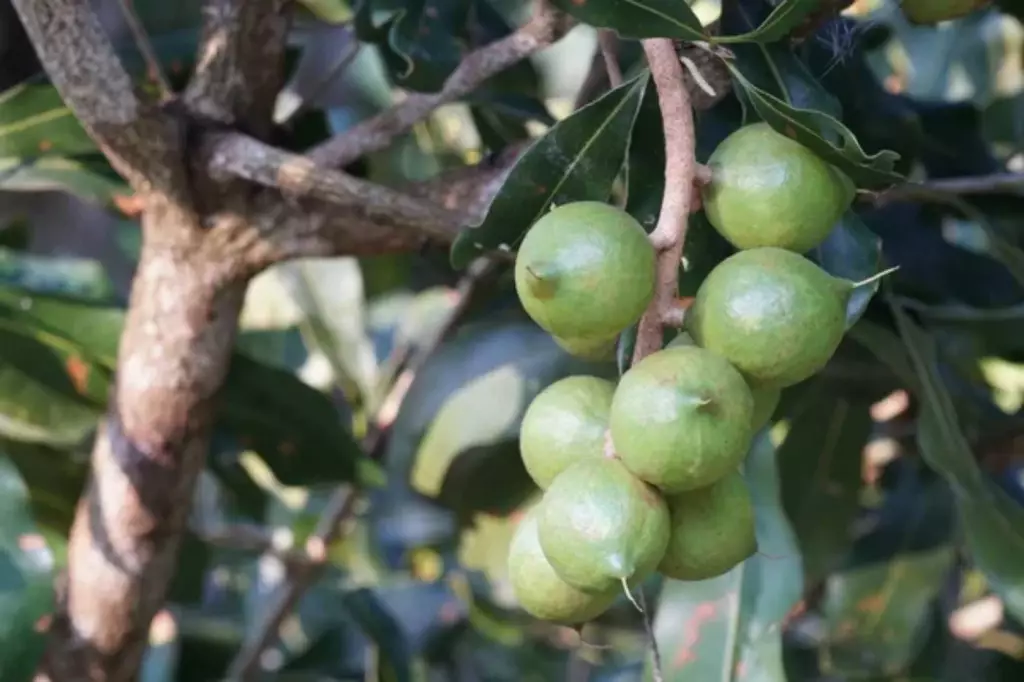
Secondly, the silt in loamy soil provides a fine texture that aids in moisture retention. This is beneficial during dry periods as it helps to ensure that the trees have access to adequate water, even when rainfall is limited. Additionally, the fine particles of silt provide a good medium for root development and support overall tree health.
Lastly, the small amount of clay in loamy soil contributes to its nutrient retention capabilities. Clay particles have a high surface area and a negative charge, which allows them to attract and hold onto positively charged nutrients, preventing them from being washed away by rain or irrigation. This helps to ensure that macadamia trees have access to essential nutrients for their growth and development.
Organic matter in soil is crucial for the growth of macadamia trees
Organic matter improves soil structure by increasing its ability to hold water and nutrients. This is particularly important for macadamia trees, as they require well-draining soil to prevent waterlogged conditions that can lead to root rot.
Additionally, it serves as a source of nutrients for the macadamia trees. As the organic matter decomposes, it releases essential nutrients such as nitrogen, phosphorus, and potassium, which are vital for the healthy growth and development of the trees.
This helps in soils with low fertility, as organic matter can help replenish and maintain the nutrient levels necessary for optimal macadamia tree growth.
Furthermore, incorporating organic matter into the soil can enhance microbial activity. Beneficial microorganisms present in organic matter can help break down organic compounds, improve soil aeration, and contribute to overall soil health.
Macadamia trees prefer properly aerated soils
Aeration refers to the process of introducing air into the soil, which is essential for root respiration and overall soil health.
For macadamia trees, proper aeration is particularly important as it allows the roots to breathe. One interesting fact about macadamia trees is that they have a deep root system.
When soil becomes compacted, either due to foot traffic, heavy machinery, or natural settling, it restricts the movement of air into the soil and can lead to inadequate oxygen levels for the roots.
To ensure proper aeration for macadamia trees, make sure to avoid compacting the soil around the trees. This can be achieved by minimizing foot traffic and the use of heavy machinery in the root zone.
Additionally, incorporating organic matter into the soil can help improve its structure, allowing for better air penetration and root expansion.
Proper aeration also facilitates gas exchange in the soil, allowing carbon dioxide to escape and oxygen to enter. When the soil is well-aerated, it creates an environment that supports healthy root development and overall plant vigor.
The soil must have good retention properties
While macadamia trees require a moist environment, they don't like to be waterlogged. The soil should retain moisture well, but excess water should be able to drain away efficiently.
The ability of the soil to retain moisture helps provide a consistent water supply to the macadamia trees' roots. It supports the uptake of essential nutrients and facilitates various physiological processes within the trees.
However, excessive water accumulation around the roots can lead to oxygen deprivation and root rot, which are detrimental to the health and productivity of macadamia trees.
To achieve the ideal moisture retention for macadamia trees, various soil amendments and management practices can be employed. Organic matter, such as compost or well-rotted manure, can be added to the soil to improve its moisture retention capacity.
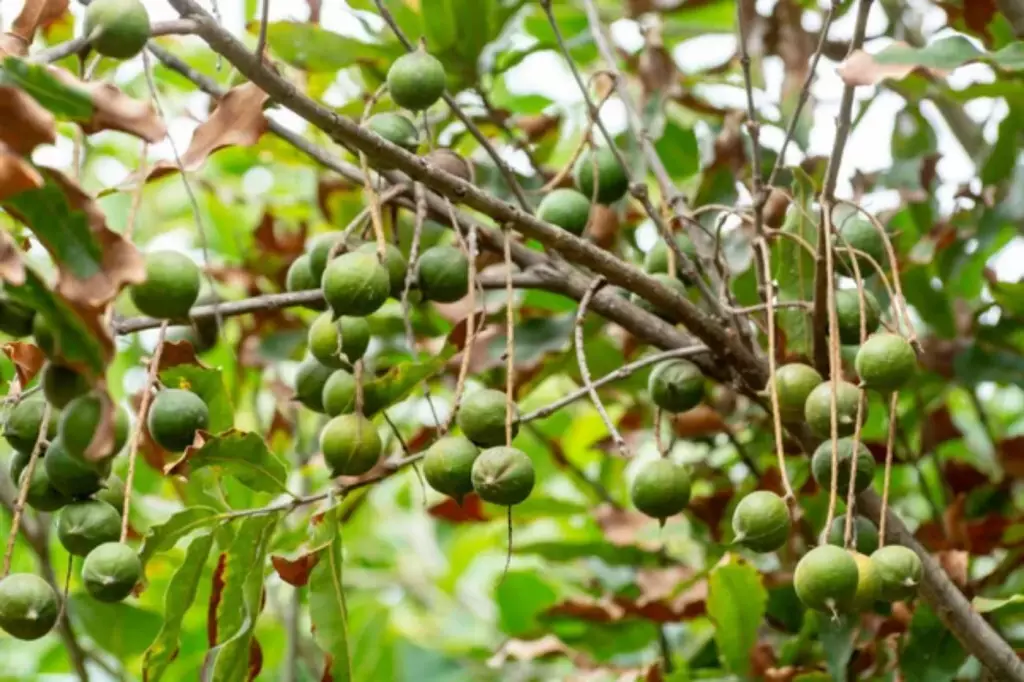
Additionally, mulching around the base of the trees can help regulate soil moisture by reducing evaporation and maintaining a more consistent level of moisture in the root zone.
Furthermore, the topography and slope of the land should be considered to ensure natural drainage of excess water away from the trees.
